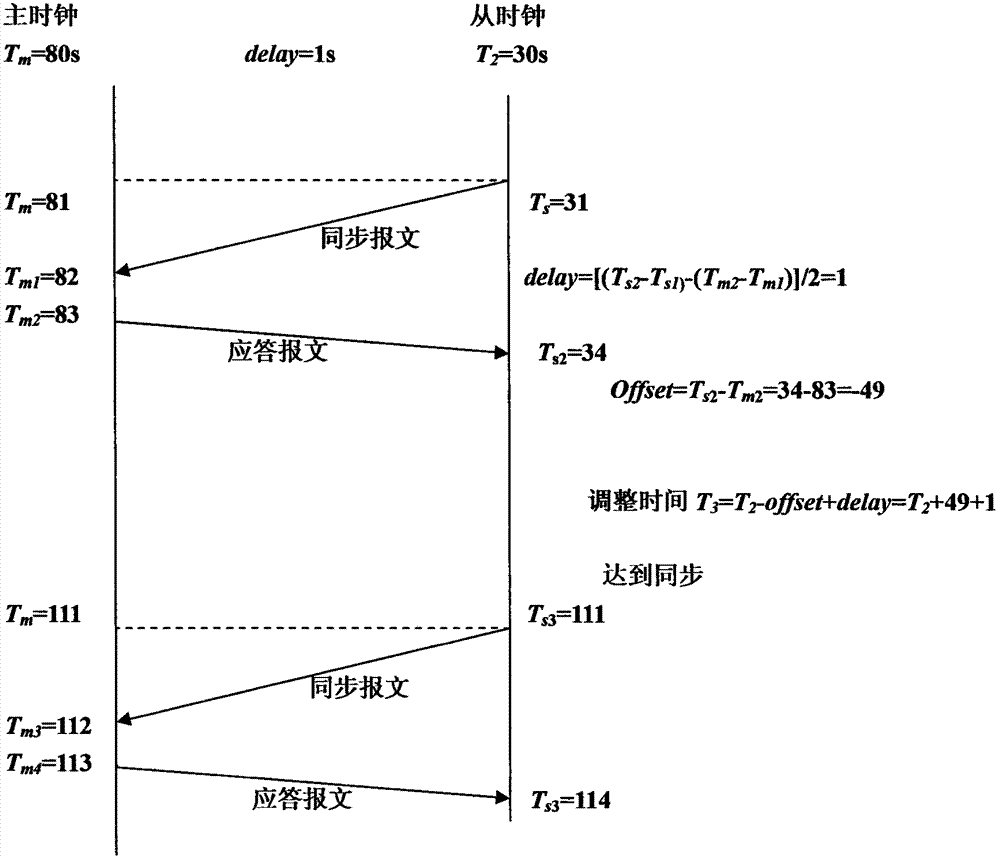Digital transformer substation distribution testing method based on ZigBee wireless technology
A wireless technology, distributed testing technology, applied in digital transmission systems, information technology support systems, electrical components, etc., can solve problems such as different output methods and paths, transmission delay differences, etc., to eliminate clock deviation and information transmission delay. Time, reduce network load, reduce the effect of handshake times
- Summary
- Abstract
- Description
- Claims
- Application Information
AI Technical Summary
Problems solved by technology
Method used
Image
Examples
Embodiment 1
[0016] figure 1 As shown, the offset measurement: Since the ZigBee network allows nodes to join and leave instantly, the host cannot use the periodic multicast to send synchronization messages. Instead, the child nodes periodically send synchronization messages to the host, and the host receives After the synchronization message is processed, it sends its own time information (including packet processing time, Tm2~Tm1 in the figure) to the corresponding child node. After receiving this time information, the child node can calculate the clock with the host Offset. Considering that the system's requirements for synchronization accuracy are not particularly high, the child nodes do not send optional subsequent messages, which can also reduce the number of handshake times for each synchronization communication, thereby reducing network load.
Embodiment 2
[0018] It can be seen from the figure that after the synchronization message is sent, the child node does not send a delay request message again. This is because the transmission delay from the child node to the host can be calculated by using the time information in the offset measurement process. The method of calculating the delay here is different from the PTP protocol. The child node records the sending time of the synchronization message and the receiving time of the response message, and calculates the two time intervals, as shown in the figure Ts2~Ts1, and then subtracts the host’s packet The processing time, Tm2~Tm1 in the figure, regard the network as a symmetric network, and then divide by 2 to get the delay time between the slave clock and the master clock. At this point, the offset and delay have been calculated, and the child nodes adjust the time to achieve synchronization between the master and slave clocks. It can be seen that the clock synchronization principl...
PUM
 Login to View More
Login to View More Abstract
Description
Claims
Application Information
 Login to View More
Login to View More - R&D
- Intellectual Property
- Life Sciences
- Materials
- Tech Scout
- Unparalleled Data Quality
- Higher Quality Content
- 60% Fewer Hallucinations
Browse by: Latest US Patents, China's latest patents, Technical Efficacy Thesaurus, Application Domain, Technology Topic, Popular Technical Reports.
© 2025 PatSnap. All rights reserved.Legal|Privacy policy|Modern Slavery Act Transparency Statement|Sitemap|About US| Contact US: help@patsnap.com

